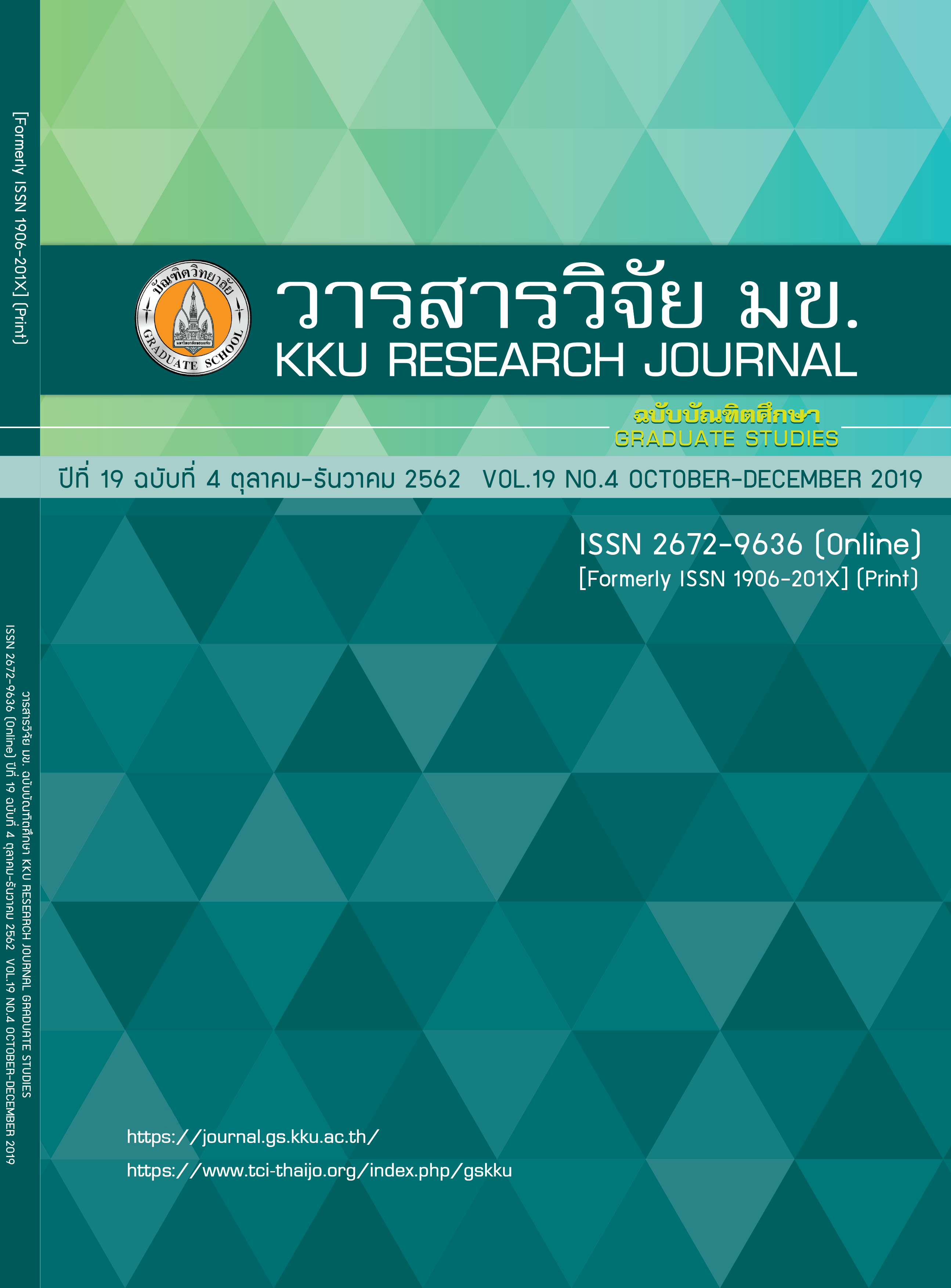Effects of Solar Photovoltaic Size on Grid-Connected Power System in Savannakhet Province, Lao People's Democratic Republic
Keywords:
PV generation, Power loss, Voltage profileAbstract
The trends of renewable energy system and clean energy have become increasingly worldwide to reduce greenhouse gas emission which is the important effect of global climate change. The electricity generation in Lao people's democratic republic (PDR) more than 70% is hydropower plants in 2017, which is not sufficient in the dry season. Therefore, solar photovoltaic (PV) system is suitable to integrate grid connection system with hydropower plants. In this paper, the analysis of solar PV installation with optimal size and location for grid-connected distribution system is proposed. The electrical parameters for estimating the electrical effects are the active power (P), reactive power (Q), voltage (V), current (I), active power loss, and reactive power loss. In addition, PV installation was explored with 5 cases: 25, 50, 75, 100 and 125% of the peak load in Nongdern substation (22 kV and the 2nd feeder). The system was simulated by DIgSILENT PowerFactory software. The optimal capacity size of PV installation connected in the bus Phonxay substation is 75% of installed capacity. The minimum value of active power and reactive power loses are 0.11 MW and 3.32 MVAR, respectively. Moreover, the voltage increases from 0.976 to 1.003 p.u. The outcome in this project to subsidize the clean energy resource and the best planning in power system for PV installation in Savanakhet Province. The power system will be reliability and stability for supply power energy to customers. Moreover, it achieves the one target of policy’s Ministry of Energy and Mine to promote and develop the solar energy.
References
2. Savonis MJ, Burkett VR, Potter JR, Kafalenos R, Hyman R, Leonard K. The impact of climate change on transportation in the Gulf Coast. TCLEE 2009 Lifeline Earthq Eng a Multihazard Environ [Internet]. 2009; 128(May 2017): 1–11. Available from: https://doi.org/10.1016/j. ocemod. 2018. 06. 003
3. International Renewable Energy Agency. Renewable Energy Statistics 2017 [Internet]. 2017, from www.irena.org/Publications
4. IRENA. Renewable Power Generation Costs in 2017. IRENA - International Renewable Energy Agency [Internet]. International Renewable Energy Agency. 2018, p. 160, Available from: https://www.irena.org/-/media/Files/IRENA/Agency/Publication/2018/Jan/IRENA_2017_Power_Costs_2018. pdf
5. Zhao Q, Yao X, Sun X. A New Feed-in-tariff Pricing Approach of Distributed Photovoltaic Generation in China. Procedia Comput Sci. 2016; 91: 334–40.
6. Poruschi L, Ambrey CL, Smart JCR. Revisiting feed-in tariffs in Australia: A review. Renew Sustain Energy Rev. 2018; 82 (September 2017): 260–70.
7. Government of Lao PDR. Renewable Energy Development Strategy in Lao PDR. 2011; (October): 16. Available from: http://www.eepmekong.org/index.php/resources/country-reports/laos/57-laos-06/file
8. Lao Ministry of energy and mines, Department of Energy Policy and Planning, Electricite Du Laos state enterprise company: demand forecrast main report 2016-2030. 2016; 2016 Feb.
9. ELECTRICITE DU LAOS [Internet]. [cited 2018 Jan 2]. Available from: http://edl.com.la/statistics.php
10. Department of Alternative Energy Development and Efficiency Thailand. Department of Electricity Lao PDR. Solar Energy Research Laboratory Department of Physics, Silpakorn University, Thailand. Assessment of solar energy potentials for Lao People’s Democratic Republic; 2006. 67-69 p.
11.Bonfiglio A, Brignone M, Delfino F, Procopio R. Optimal control and operation of grid-connected photovoltaic production units for voltage support in medium-voltage networks. IEEE Trans Sustain Energy. 2014; 5(1): 254–63.
12. Sobieh A, Mandour M, Saied EM, Salama MM. Optimal Number Size and Location of Distributed Generation Units in Radial Distribution Systems Using Grey Wolf Optimal Number Size and Location of Distributed Generation Units in Radial Distribution Systems Using Grey Wolf Optimizer. 2017; 7 (February): 2367–76.
13. Albadi MH, Soliman HM, Thani MA, Baalawi H. Optimal Allocation of PV Systems in Distribution Networks Using PSO. 2017;1–5.
14. Al Momani T, Harb A, Amoura F. Impact of photovoltaic systems on voltage profile and power losses of distribution networks in Jordan. 2017 8th Int Renew Energy Congr IREC 2017. 2017;(Irec):2–7.
15. Iioka D, Miura K, Machida M, Kikuchi S, Imanaka M, Baba J, et al. Hosting capacity of large scale PV power station in future distribution networks. 2017 IEEE Innov Smart Grid Technol - Asia Smart Grid Smart Community, ISGT-Asia 2017. 2018; 1–6
16. Cheng D, Mather BA, Seguin R, Hambrick J, Broadwater RP. Photovoltaic (PV) impact assessment for very high penetration levels. IEEE J Photovoltaics. 2016; 6 (1): 295–300.
17. Kenneth AP, Folly K. Voltage Rise Issue with High Penetration of Grid Connected PV Voltage Rise Issue with High Penetration of Grid Connected PV. 2014; (August 2016): 4959–66.
18. Afolabi OA, Ali WH, Cofie P, Fuller J, Obiomon P, and Kolawole ES. “Analysis of the Load Flow Problem in Power System Planning Studies,” Energy and Power, no. September, pp. 509–523, 2015.
19. Chen Y. Power Flow Equation Formulation. 2015; 1(5): 1–5.
20. Manual, “PowerFactory 15. Tutorial,” pp. 0–88, 2013.
21. Thai YAZAKI technical data. Retrieved August 13, 2018, from http://www.nre.co.th/2014/downloads-spec-tis-catalog/category/13-thaiyazaki.html



